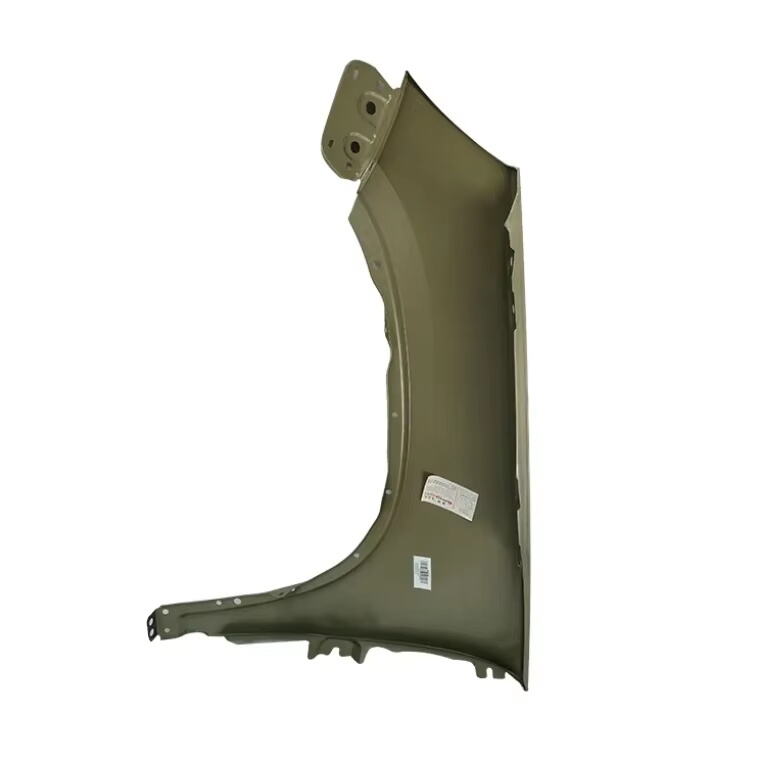Жаңашылдық автомобиль бөлшектері өнеркәсібін қайта қалыптастырады. Сіздер тұрақтылық, қауіпсіздік және байланыс саласындағы қиындықтарды шешуге мүмкіндік беретін жетістіктерді көресіздер. Бұл жаңалықтар көліктердің тиімділігін арттырып, қоршаған ортаға әсерін азайтады. Ақпаратты сақтау бұл өзгерістердің салаға қалай әсер ететінін түсінуге көмектеседі. Жаңашылдықты дамыту сіздерді осы тез дамып келе жатқан салада алға басуыңызды қамтамасыз етеді.
Электрлендіру және EV компоненттеріндегі инновацияларды жүргізу
Батарея технологиясының жетістіктері
Батарея технологиясы көліктердің электрлендіруінде маңызды рөл атқарады. Сіз өндірушілердің көлік қашықтығын ұлғайту үшін энергия тығыздығын жақсартуға назар аударып жатқанын көресіз. Литий-ионды батареялар нарықта басымдыққа ие, бірақ қатты күйдегі батареялар ойынды өзгертеді. Бұл батареялар жылдам зарядтауға мүмкіндік береді және қауіпсіздікті арттырады. Зерттеушілер сондай-ақ өнімділікті арттыру үшін кремний мен графен сияқты балама материалдарды да зерттейді.
Электр қозғалтқыштары мен қозғалтқыш жүйелеріндегі жаңалықтар
Электр қозғалтқыштары мен қозғалтқыш жүйелері елеулі жетістіктерге жетті. Қазіргі инженерлер жоғары тиімділік пен салмағы аз қозғалтқыштар жасайды. Бұл көліктердің өнімділігін арттырады және энергия тұтынуын азайтады. Тұрақты магнит моторлары мен индукциялық моторлар электрлік көліктер үшін танымал таңдау болып табылады.
Трансмиссиондық жүйелер әлде-да кішірек және интегралдауға аударылуда. Бұл сабақты қысқартады және төменгі заттарды төмендетеді. Сіз көптеген электромобилдерде екі моторлы конфигурацияларды көре аласыз, олар тракцияны жеткізіп, беттердің басқарымын жақсырақ етеді.
Автономды жүргізу технологияларының жаңашылдыққа ықпал етуі
Сенсорлар мен лидар жүйелерін әзірлеу
Сенсорлар мен лидар жүйелері автономды жүргізудің арқауы болып табылады. Бұл технологиялар көліктерге айналасын анықтауға және нақты уақыт режимінде шешім қабылдауға көмектеседі. Сіздер қоршаған ортаның 3D картасын жасау үшін лазер сәулелерін пайдаланатын лидар жүйелерін таба аласыздар. Бұл тіпті жарықсыз жағдайда да нақты нысанды анықтауды қамтамасыз етеді.
Камера және радар жүйелері лидардың қосымшасы ретінде қосымша деректер беру арқылы қолдау етеді. Камералар көрнетілік мәліметтерді қаптайды, ал радар қашықтықтарды және жылдамдықтарды өледі. Бірлесе отырып, олар кестелік тез ауыстыруға және қауіпсіз навигацияға мүмкіндік береді. Қазіргі уақытта өндірістіктер бұл компоненттерді кішірек, арзан және тиімдірек етуге шешім қойып жатады.
Жаңартылған жүргізушіге көмек көрсету жүйелерінің (ADAS) дамуы
ADAS-тың мүмкіндіктері қауіпсіздік пен ыңғайлылықты арттырады. Бұл жүйелерге жолақты ауыстырып кету туралы ескертулер, адаптивті жылдамдықты басқару және автоматты төтенше тежеу кіреді. Сіздер осы қасиеттерді қазіргі көліктерде көрген шығарсыздар, өйткені олар стандартқа айналып барады.
Инженерлер АДАС-ті одан әрі сенімді ету үшін жетілдіріп жатыр. Мысалы, көпірдегі жолды ұстауға көмектесетін жүйелер қазір жылдам басқаруды қамтамасыз ету үшін алдыңғы қатарлы алгоритмдерді қолданады. Адаптивті жылдамдықты басқару қозғалыс ағынына байланысты жылдамдықты нақты реттейді. Бұл жақсартулар көлік жүргізуді қауіпсіз етеді және жол апаты қаупін азайтады.
Қауіпсіздіктің озық ерекшеліктері саласындағы инновацияларды жүргізу
Түйіспеу және авариялық тежеу
Түйісуден аулақ болу жүйелері кез келген апатты байқап, алдын алуға көмектеседі. Бұл жүйелер жолды бақылау үшін датчиктер, камералар және радарларды пайдаланады. Олар кез келген жол соқтығысуын байқағанда, сізді ескертеді немесе автоматты түрде тежейді. Ашығыс тежеу жүйесі кез келген жол-көлікпен соғысудан аулақ болумен қатар, егер сіз уақытында әрекет етпесеңіз, көлікті тоқтатады.
Өндірушілер осы технологияларды жетілдіріп, оларды нақтырақ етуде. Мысалы, жаңа жүйелер көлік, велосипед және кедергілер сияқты бірнеше заттарды бірден анықтай алады. Бұл күрделі жол қатынасы жағдайында жақсы қорғанысты қамтамасыз етеді.
Адаптивті жылдамдықты басқару және жолақты ұстауға көмектесу
Адаптивті жылдамдықты басқару машинаңыздың жылдамдығын алдыңғы машинадан қауіпсіз қашықтықты сақтау үшін реттейді. Ол радиолокациялық және камералық бақылауды пайдаланады. Көлік жолының ортасында тұруға көмектесетін құралдар.
Бұл жүйелер ұзақ жолдардың стрессін азайтуға көмектеседі. Сіз жылдамдықты әрекетке алу немесе жолдан тыс болмаңыз келетіні үшін тікелей қажет емес. Инженерлер қазір осы қасиеттерді қиын шарттарға сай етуге тырысады, мысалы, қызық бұрыштар немесе көп ауызбөлік трафик.
Тұрақтылық пен жеңіл материалдар саласындағы инновацияларды жүргізу
Қайта өңделетін және жаңартылатын материалдарды қолдану
Көлік өнеркәсібі қоршаған ортаға әсерін азайту үшін қайта өңделетін және жаңартылатын материалдарға ауысуда. Қазіргі кезде көлік өндірушілер қайта өңделген пластик, металл, тіпті маталарды да пайдаланады. Мысалы, кейбір көліктердің ішкі қабаты қайта өңделген бөтелкелерден жасалған. Бұл әдіс ысырапты азайтып, табиғи ресурстарды үнемдейді.
Биологиялық негізді пластиктер мен табиғи талшықтар сияқты жаңартылатын материалдар да танымал болып келеді. Бұл материалдар жүгері, қант қызылшасы немесе қымыз сияқты көздерден алынады. Олар дәстүрлі мұнайға негізделген Өнімдер .
Жеңіл композитті материалдарды тиімді пайдалану
Жеңіл композиттік материалдар көліктердің тиімділігін арттыруда маңызды рөл атқарады. Көміртек талшығы мен алюминий композиттері сияқты материалдар машинаның салмағын, беріктігін шектеместен азайтады. Жеңіл көлік қозғалу үшін аз энергия қажет етеді, бұл отын тиімділігін арттырады немесе электрлік көліктердің автокөлік автокөліктерін пайдалану аясын кеңейтеді.
Сіз бұл материалдарды әртүрлі элементтерде пайдалануға көре аласыз, дене панелдерінен бастап құрылғы элементтеріне дейін. Инженерлер осы композиттерді үлкен стresсқа dayandıru kезінде салыстырмалы тегін ету үшін дизайндейді.
Жаңашылдық автомобиль бөлшектері өнеркәсібін өзгертіп, оның болашағын жаңашыл жетістіктермен қалыптастырады. Тұрақтылық, қауіпсіздік және байланыс сияқты бағыттар көліктердің қалай жұмыс істейтінін және әлеммен қалай қарым-қатынас жасағанын қайта анықтайды. Өзгерістерге бейімделуді жалғастыру осы өзгерістерді тиімді қолдана алуыңызға кепілдік береді. Инновацияларды жүргізу осы үнемі өзгеріп отыратын ортада бәсекеге қабілетті болуды қамтамасыз етеді.

